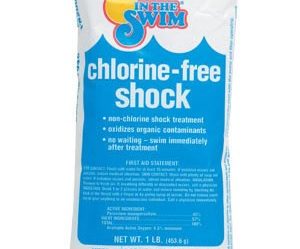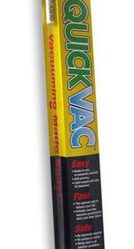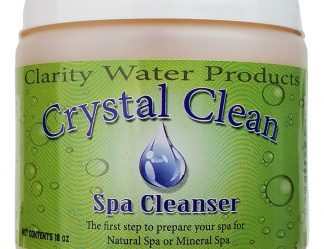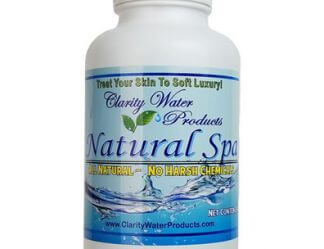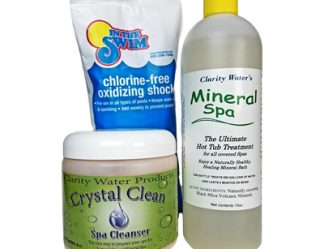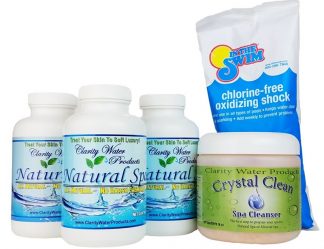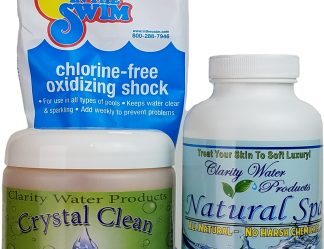
Did you recently determine that your skin is sensitive to the warm water in your hot tub? You may find that you get an itchy, pimply, red rash following the use of your hot tub. This rash is often called hot tub folliculitis or more commonly “hot tub rash.”
There are several possible reasons that you might have contracted the hot tub rash. Not all of those reasons are due to bacteria. In fact, the majority of hot tub rashes are caused by the chemicals traditionally used to prevent hot tub folliculitis in the first place.
What is Hot Tub Folliculitis?
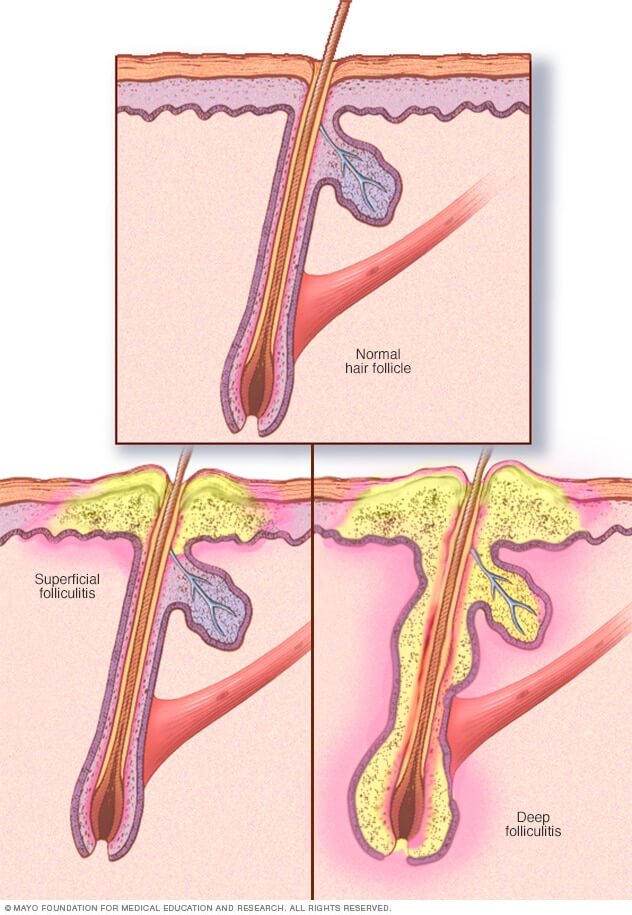 Folliculitis, simply put, is the inflammation of a hair follicle. Sometimes, the inflammation is infectious in nature. These infections get caused by all sorts of different bacteria, most commonly the notorious Staphylococcus aureus. They can also be caused by yeasts, viruses, and even parasites.
Folliculitis, simply put, is the inflammation of a hair follicle. Sometimes, the inflammation is infectious in nature. These infections get caused by all sorts of different bacteria, most commonly the notorious Staphylococcus aureus. They can also be caused by yeasts, viruses, and even parasites.
Other times, it is not entirely clear what’s causing the inflammation. It can be caused by something as simple as too much moisturizer clogging the follicle. You have probably heard of acne. Well, believe it or not, that is a type of folliculitis, too.
Hot tubs are also full of toxic chemicals that we add to keep the water clean and clear. Combined with the warm turbulent water these chemicals often irritate people’s skin in a way that looks just like hot tub folliculitis or hot tub rash.
What Causes Hot Tub Rash?
Hot tub folliculitis is a very specific term. It refers to a type of folliculitis caused by using a hot tub. As stated above bacteria can be a cause of this hot tub rash. In most cases, the suspect bacteria by Pseudomonas aeruginosa. P. aeruginosa is primarily contracted in public hot tubs, such as those found at hotels, gyms, and public swimming facilities. Fortunately, this type of bacteria can’t survive on human skin for very long. That is why this problem usually only occurs after soaking in contaminated warm water for a long period of time. This type of bacteria especially loves damp wood. While infection can happen after soaking in any kind of contaminated hot water, wooden hot tubs tend to be higher risk.
Now, a hot tub rash can be caused by more than just bacteria. Simple contact dermatitis, or an itchy red rash not caused by any kind of pathogen, can be caused by chemicals in the water or the temperature of the water. These rashes are often incorrectly diagnosed as being caused by a bacterial infection of P. aeruginosa. Or a doctor may prescribe a bacterial treatment just to cover all bases.
What Does Hot Tub Folliculitis Look Like?
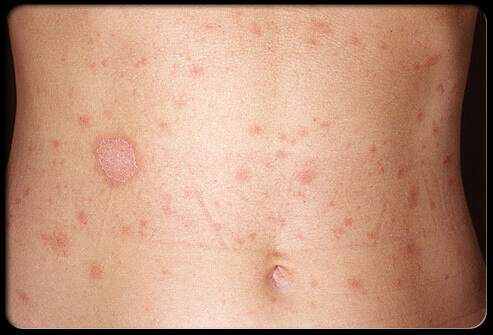
Hot tub rash, in fact just about any type of folliculitis, usually looks like a bunch of little bumps scattered across your skin, sometimes with surrounding redness. To the untrained eye, it probably looks exactly like a teenager’s acne but on the body instead of the face. It is very important not to poke at or try to pop the pimply bumps yourself. This can cause a spread of the infection. Don’t scratch! The best way to deal with hot tub folliculitis when you have it is to just leave it alone until you get in and see a doctor. Most cases are mild and will disappear after just a few days.
A noninfectious hot tub rash likely will not have those kinds of bumps. Instead, it will look like a flat plane of red and slightly swollen skin. It might feel more like a chemical burn rather than a rash. However, the difference is often hard to determine unless the rash is tested for the specific bacteria. Hot tub rash caused by sensitivity to hot tub chemicals will also disappear after just a few days. However, you should use your own judgment to determine whether to see a doctor during that period.
It is often the case that if a group of two or more people used the same hot tub and contracted the same rash the hot tub folliculitis was probably caused by the introduction of the bacteria to the tub. If only one person in the group contracted the hot tub rash after using the hot tub it is likely a chemical sensitivity rather than bacteria caused.
What Are the Symptoms of Hot Tub Rash?
Most often, it just itches a lot. Sometimes it can be painful, too, which might be a sign of a more developed infection. In those circumstances, the infection’s little pus-filled acne-like bumps can turn hard and red. If that happens, you should seek treatment. A skin sensitivity to hot tub chemicals may display the same type of symptoms however, often it feels a bit like a sunburn. In most cases, the hot tub rash will appear on parts of your body converted by your swimsuit rather than all over.
How to Treat Hot Tub Rash
The good news is that, because the bacteria can’t usually survive on your skin for long, a bacterial caused hot tub rash should pass within a few days in mild cases. That being said, be sure to check with your doctor if you have any doubt whatsoever. More severe cases are going to require antibiotics or antiseptic cleanses. The antibiotics in question will need to cover gram-negative bacteria like P. aeruginosa. This can vary by a lot depending on your own unique circumstances. You can discuss the exact treatment you need with your doctor or another healthcare professional.
If you determine that your hot tub rash is the result of the chlorine or bromine used in your tub, it should go away is just a few days. You should see a healthcare professional if in your judgment it is required. In the meantime, you will need to stay out of the tub until you can treat the tub in a manner that avoids the chemicals to which you are sensitive.
How to Avoid Hot Tub Folliculitis
There are a few helpful tricks you can use to avoid this type of hot tub folliculitis. The easiest way to avoid the infection is probably just taking off your swimsuit after bathing. Why? It is not a good idea to lounge around in your damp clothes after your soak in the hot tub. Your soaked swimsuit seals in both moisture and chemicals or bacteria, giving them a longer period to irritate your skin. You can also, shower off before entering the hot tub and then showering off when you get out as well. This will help wash off any bacteria that may be on you that you could inadvertently introduce to the tub as well as remove the chlorine from your skin when you get out.
The absolute best way to avoid infection, though, is to maintain your hot tub and not introduce bacteria to it in the first place.
Here are some options for treating your hot tub to avoid hot tub folliculitis
Traditional Hot Tub Chemical Approach
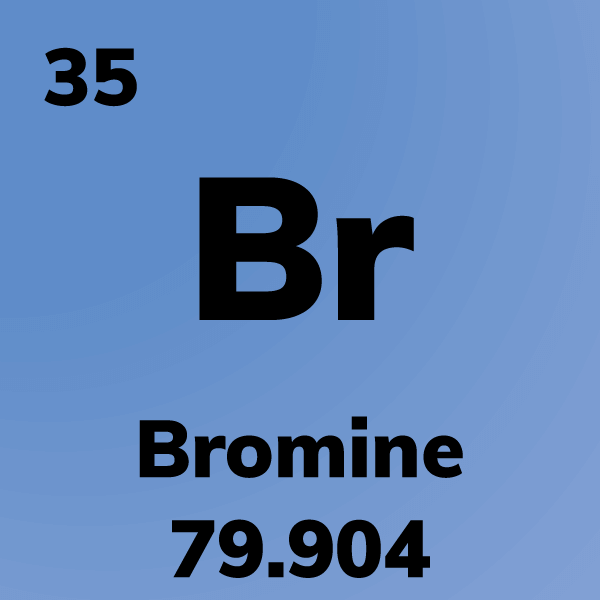
If you are not sensitive to chlorine or bromine and not concerned with the health effects, then following a strict protocol of traditional chemical additives should work. As long as the water in your hot tub has a high enough level of chlorine and the water is balanced (pH and Alkalinity are at the recommended levels), you can be reasonably sure that bacteria are not able to live very long in your hot tub.
Keep in mind that bromine and chlorine will evaporate out of your hot tub on a daily basis whether you use the tub or not. Therefore, you will need to constantly test the water and add more chemicals daily.
Next to chemical irritation, the burden of maintaining this strict chemical regimen is often the reason people using chemicals end up with hot tub rash anyway.
Others find that they are sensitive to the chemicals themselves. Many may have had no history of chemical skin sensitivity when swimming a pool in the past. However, it is often the hot temperature, combined with the jets and chemicals that cause the hot tub rash. If this is the case, then you need to try another approach.
Natural Non-toxic Hot Tub Approach
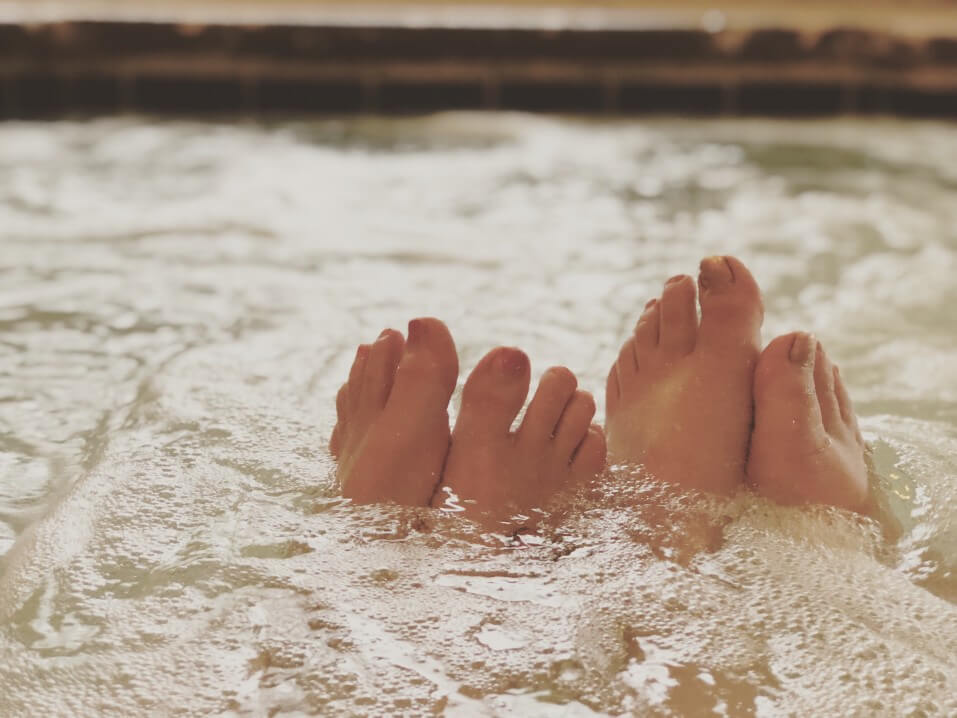 If you find that your skin sensitive to chlorine hot tubs and/or bromine hot tubs or that you just don’t like the idea of soaking in these chemicals, then a natural approach may be for you.
If you find that your skin sensitive to chlorine hot tubs and/or bromine hot tubs or that you just don’t like the idea of soaking in these chemicals, then a natural approach may be for you.
A quick search on Youtube.com will present all sorts of so-called “Natural” approaches to hot tub water treatment. Some of these include daily doses of hydrogen peroxide, saltwater hot tubs (generate chlorine from the salt added to the water), high doses of ozone, vinegar, baking soda and etc. These so-called all-natural approaches involved more chemistry and much more work than chlorine or bromine.
Clarity for Spas Makes Natural Hot Tubs Easy
Clarity for Spas originated the all-natural non-toxic hot tub water treatment approach back in the 1990’s. In fact, our Natural Spa has inspired many imitators in the industry but our updated formula is still the best. Our natural hot tub water treatments will either reduce or eliminate your use of chlorine while keeping hot tub maintenance super simple. You will not need to constantly monitor pH and alkalinity. This alone is worth the switch to our Natural Spa product or our Mineral Spa product.
In addition to our products, Natural Spa or Mineral Spa (or a combination of both) we highly recommend weekly shocking your water with a non-chlorine shock, rinsing your filter(s), increasing your filtration cycles, and showering off before and after using your hot tub.
You Can Still Love Your Hot Tub
You do not have to give up your hot because of concern of chemical-induced hot tub folliculitis. Many of our customers have found that they can truly enjoy their hot tubs again after employing our natural hot tub water treatments.
Learn more about our natural hot tub water treatment products. Your first purchase is guaranteed by our no questions asked guarantee. Additionally, we are available directly by phone to help you with your hot tub. See our products at https://www.clarityforspas.com/product-category/hot-tub-products/ .
Please email us at customerservice@clarityforspas.com or call (509) 426-3145 (no telemarketing calls) with your questions.
![Clarity for Spas: Natural Hot Tub Water Treatment | Chlorine Free [Official]](https://www.clarityforspas.com/wp-content/uploads/2016/06/cropped-logo-e1522429615167.png)

